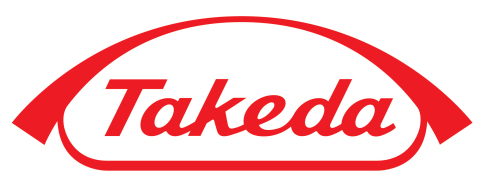
Shanghai, China & Osaka, Japan:
− TAKHZYRO is the first approved modern therapy for the preventive treatment of hereditary angioedema (HAE) in patients 12 years and older in China1
− TAKHZYRO is a subcutaneous injection that took the majority of patients one minute or less to self-administer2
Takeda Pharmaceutical Company Limited (TSE:4502/NYSE:TAK) (“Takeda”) today announced that China’s National Medical Products Administration (NMPA) has approved TAKHZYRO® (lanadelumab) subcutaneous injection for prophylaxis to prevent attacks of hereditary angioedema (HAE) in patients 12 years and older.1 TAKHZYRO is a fully human monoclonal antibody (mAb) that inhibits the activity of plasma kallikrein, an enzyme which is uncontrolled in people with HAE, to help prevent HAE attacks.3
“The approval of TAKHZYRO is exciting news for the HAE community in China,” said Fiona Wardman, the Chief Regional Patient Advocate at Hereditary Angioedema International. “HAE is a severe, potentially fatal genetic condition that causes unpredictable, painful, and debilitating swelling attacks. Until now, no modern therapies have been available to HAE patients in the country, and people with HAE rely on anabolic androgens and tranexamic acid for prophylaxis, and fresh frozen plasma for emergencies. The availability of TAKHZYRO to help prevent HAE attacks represents significant progress for those living with this chronic condition.”
HAE is a rare, genetic disorder estimated to affect about 1 in 50,000 people worldwide.4 The condition results in recurring attacks of oedema (swelling) in various parts of the body, including the abdomen, face, feet, genitals, hands and throat, that can be debilitating and painful. Laryngeal attacks that obstruct the airways are potentially life-threatening due to the risk of asphyxiation.5,6
“This milestone demonstrates Takeda’s ongoing commitment to support the HAE community globally, as we work to expand access to TAKHZYRO and potentially 14 more highly innovative Takeda medicines to China’s patients over the next five years,” said Sean Shan, President of Takeda China. “The Chinese government’s recent healthcare reforms play an evolving role in reaccelerating the delivery of important therapies like TAKHZYRO to as many patients as possible through their efforts to increasingly reward innovation.”
In the 26-week Phase 3 HELP (Hereditary Angioedema Long-term Prophylaxis) Study™, which included 125 people with HAE, TAKHZYRO reduced the mean number of monthly HAE attacks by 87% relative to placebo when administered at 300 mg every two weeks and 73% relative to placebo when administered at 300 mg every four weeks (adjusted P<0.001). A prespecified, exploratory analysis showed that over the entire 26-week study (days 0-182), 44% (n=12/27) of patients taking TAKHZYRO 300 mg every two weeks were attack-free vs. 2% (n=1/41) of patients taking placebo. A post-hoc sensitivity analysis showed that 77% (n=20/26) of the patients receiving TAKHZYRO 300 mg every two weeks were attack-free during a steady-state (day 70-182) vs. 3% of patients on placebo (n=1/37).3 The most commonly reported treatment-emergent adverse events (excluding HAE attacks) in patients treated with TAKHZYRO during the entire treatment period were injection site pain (42.9%), viral upper respiratory tract infection (23.8%), headache (20.2%), injection site erythema (9.5%), injection site bruising (7.1%), and dizziness (6.0%). Most treatment-emergent adverse events (98.5%) were mild to moderate in severity.3 The HELP Study™ is the largest randomised, controlled clinical prevention study conducted to date in HAE.
TAKHZYRO has a half-life of approximately two weeks and may be self-administered as one subcutaneous injection every two weeks, only after training by a healthcare professional.3 The recommended starting dose is 300 mg every two weeks. A dosing interval of 300 mg TAKHZYRO every four weeks is also effective and may be considered if the patient is well-controlled (e.g., attack free) for more than six months. In clinical trials, the majority of patients took within 10 to 60 seconds to administer the injection.2
TAKHZYRO is currently available in more than 20 countries and additional regulatory submissions are ongoing worldwide.
About TAKHZYRO® (lanadelumab)
TAKHZYRO®(lanadelumab) is indicated for prophylaxis to prevent attacks of hereditary angioedema (HAE) in patients 12 years and older. TAKHZYRO is a fully human monoclonal antibody that specifically binds and decreases plasma kallikrein activity. TAKHZYRO is produced in Chinese Hamster Ovary (CHO) cells by recombinant DNA technology.2
TAKHZYRO is formulated for subcutaneous administration and has a half-life of approximately two weeks in patients with HAE. TAKHZYRO is intended for the self-administration or administration by a caregiver, only after training by a healthcare professional.3
TAKHZYRO is not intended for the treatment of acute HAE attacks.
TAKHZYRO Safety Information for China
TAKHZYRO is indicated for prophylaxis to prevent attacks of hereditary angioedema (HAE) in patients 12 years and older.1
TAKHZYRO treatment should be initiated under the supervision of a physician experienced in the management of patients with hereditary angioedema (HAE). TAKHZYRO may be self-administered or administered by a caregiver only after training on SC injection technique by a healthcare professional.
Contraindications
Allergy to any ingredients in TAKHZYRO.
Precautions
Hypersensitivity reactions have been observed. In case of a severe hypersensitivity reaction, discontinue TAKHZYRO administration and institute appropriate treatment. TAKHZYRO is not indicated for treatment of acute HAE attacks.
Adverse Reactions
The most commonly observed adverse reactions (≥10% and higher than placebo) associated with TAKHZYRO were injection site reactions consisting mainly of pain, erythema, and bruising at the injection site; upper respiratory infection; headache; rash; myalgia; dizziness; and diarrhea. Less common adverse reactions observed included elevated levels of transaminases; one patient discontinued the trial for elevated transaminases.2,3
Use in Specific Populations: The safety and efficacy of TAKHZYRO in pediatric patients <12 years of age have not been established.2
No data are available on TAKHZYRO in pregnant women. No data are available on the presence of lanadelumab in human milk or its effects on breastfed infants or milk production.2
Disclaimer: This content is distributed by Business Wire India.



